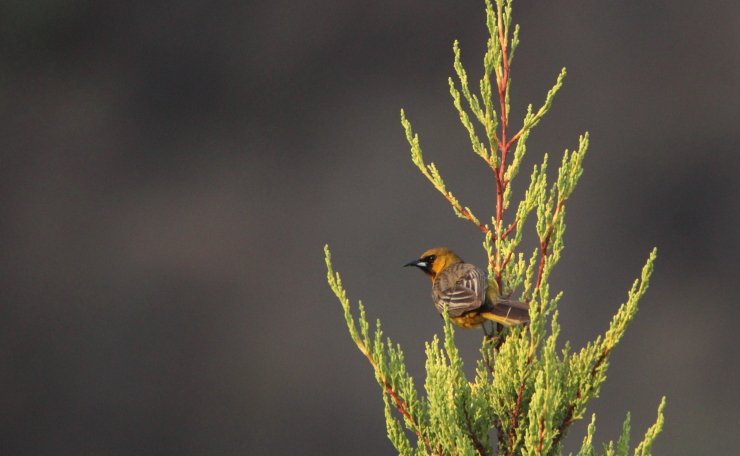
As is the case with many birders all over the world, I have been living under total lockdown for the past three weeks. As a result, all of the birding I have done has been in my back yard, or from my roof.
As our long-time readers know, one 10,000 Birds tradition is for each writer to write in December about their Best Birds of the Year. So, in order to up the ante a bit during this period of limitations, I decided to consider what my Best Birds of the Back Yard would be (so far).
My back yard is a tiny 26 x 43 feet (8 x 13 meters). I have to go up on my above-mentioned roof to get a good view of birds moving through the rest of the neighborhood. The garden does, however have the advantage of being only two blocks from a wild area. And I have done everything I can to make it seem like an extension of that wild area, with lots of plants and the only reliable source of water in several blocks.
The biggest disadvantages of my back yard are 1) that it is on the south side of the house, so the birds I would like to photograph there are consistently backlit, 2) there is a large ridge at the southern edge of our neighborhood, so the yard is in rather dense shade during the peak dawn hours, and 3) we do not live on any migratory flyway. (Several of my Mexican birder friends live along the Gulf of Mexico coast, and can see hundreds of hawks over their yards in a single day, just by looking up, during the spring and fall. One has a large yard in the jungle along the same flyway, and can see as many as 100 species during migration, including a fantastic collection of eastern Wood Warblers. I do not like these friends right now.)
A good morning in my yard will probably only yield some 20 species, including those seen from my house and in neighbors’ yards. Still, during these few weeks in which I have only been able to bird from my home, there have been some nice surprises. But first, some of the expected species: No, I am not going to sing the praises of the over-abundant House Sparrows, which love to nest in my garden, or the more pleasing but all-too-abundant Inca Doves. But I do owe a shout-out to the House Finches that love my neighbors’ yards. Although I, being a California boy, have seen House Finches all my life, I still think their song is one of the sweetest around.
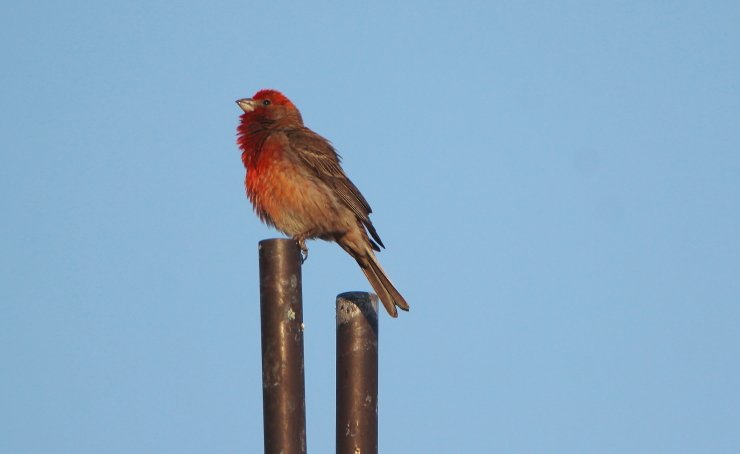
Then there are the local specialties which are common here, but unusual for visitors. When I went up on my roof this morning, no sooner had I wondered why I hadn’t seen any Cinnamon-rumped Seedeaters for a while, when this male turned up. This tiny bird also has a sweet song that I love. In fact, it seems to sing sweet-sweet-sweet as part of its song!
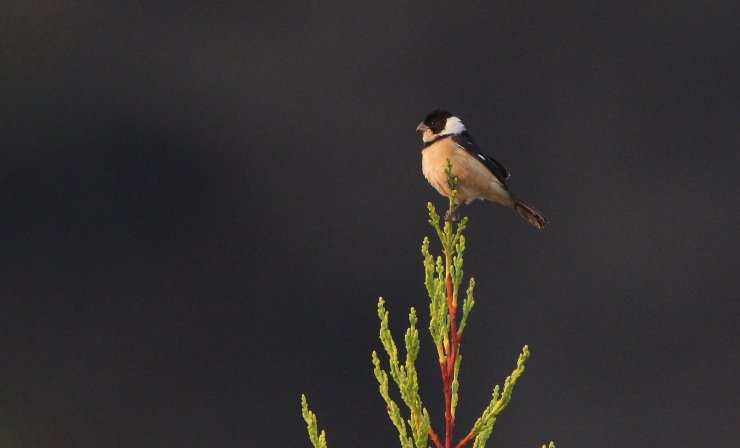
Other local specialties include a pair of Vermilion Flycatchers, which turn up most days in the spring. Our Black-vented Orioles come to bathe, and for the nectar from my banana flowers. Blue Mockingbirds, once rare in our suburban area, are now enthusiastic visitors, both for my birdbath and the blackberries my garden offers. This spring, a Bronzed Cowbird can be seen in the neighborhood at all hours of the day. (These birds, like their Brown-headed cousins, are parasitic breeders. But they are true natives, and occur in much, much smaller numbers, so I am still fond of them.)
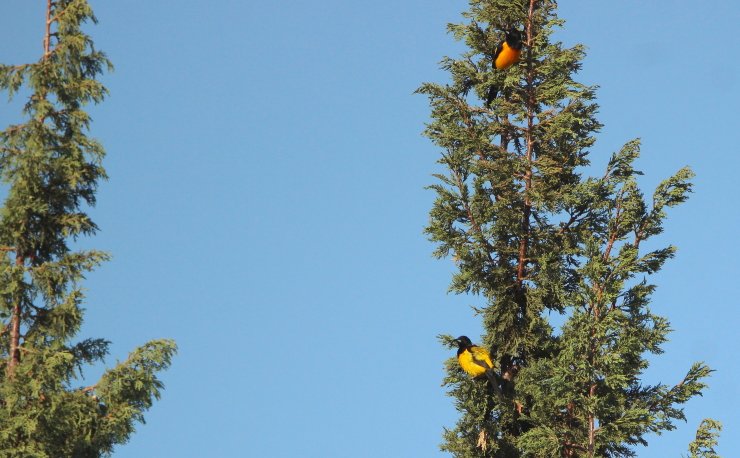
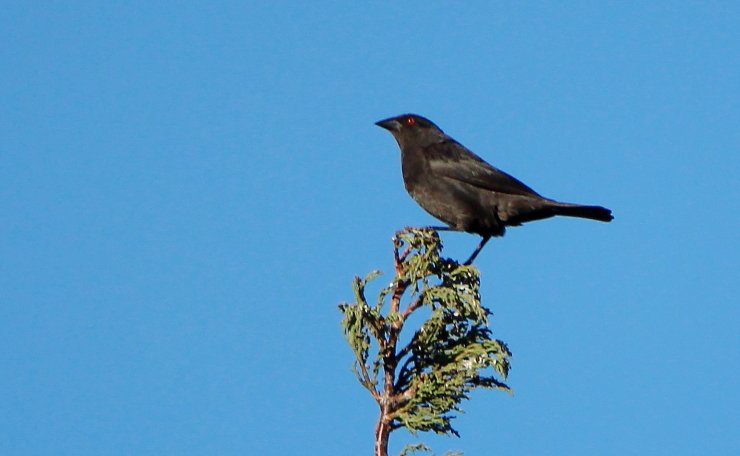
We are also getting daily visits from a beautiful endemic Rufous-backed Robin. When I first reported this species in another post, I had to use a photo of the same species from another state. But here is my very own garden Robin, although severely corrected for very low light:
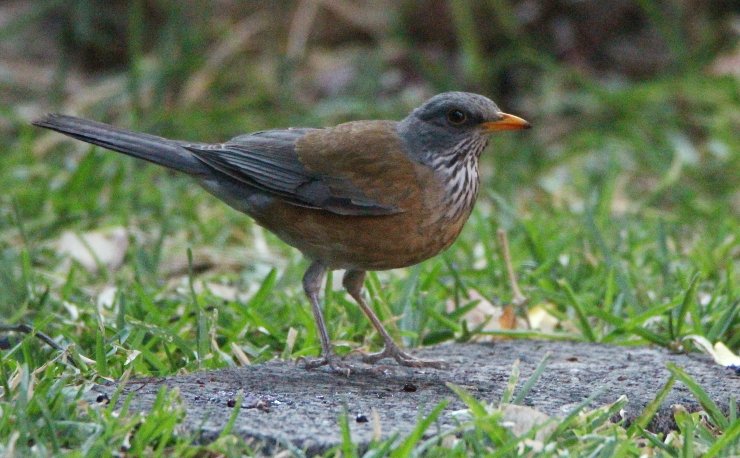
Because of my increased surveillance of my garden and neighborhood, other surprises have turned up. Not all have been pleasant; I’ve been seeing Eurasian Collard-Doves in Morelia for several years now, but April 14th was the first day I saw one just beyond my garden wall. On a more positive side, although I had stated in a post a few weeks ago that our Western Tanagers had already migrated north, one was still present a few houses away on May 5th. Apparently I would have known that if I had a fig tree of my own.
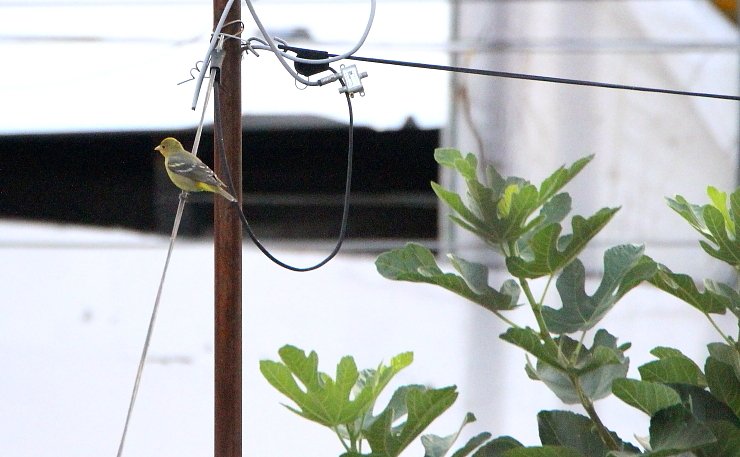
But the absolute winners among my Best Birds of the Back Yard are two beautiful species. I have often seen Elegant Euphonias feeding on the Mistletoe-laden trees of the ridge above our neighborhood. But I never expected to see these beautiful birds in my yard, above all because I remove any mistletoe that tries to parasitize my garden trees. The dreadful first photo, taken through our dining room window, shows the pair checking my garden out; I am including a second photo of a male, taken in a nearby wild area, so you can see what all the fuss is about.
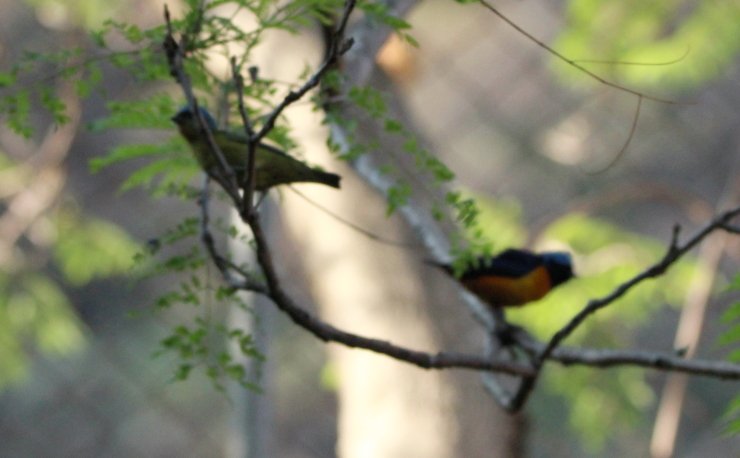
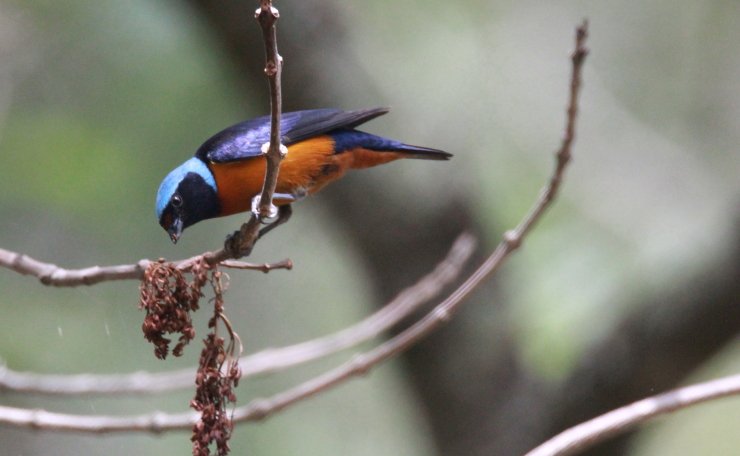
And finally, the endemic Streak-backed Oriole is a species that is easy to find in more tropical altitudes to the south of us, and can also be seen in Mesquite forest to our north. But I had only once seen it within the city of Morelia, and no one else has reported it within the city. So when I saw this bird next door (shown in the photo at the top), I lazily assumed it was a migratory Hooded Oriole.
But when I saw it a week later, feeding on my blackberries, its position forced me to focus on those streaks on its back. I will have to look more closely at my Orioles from now on.
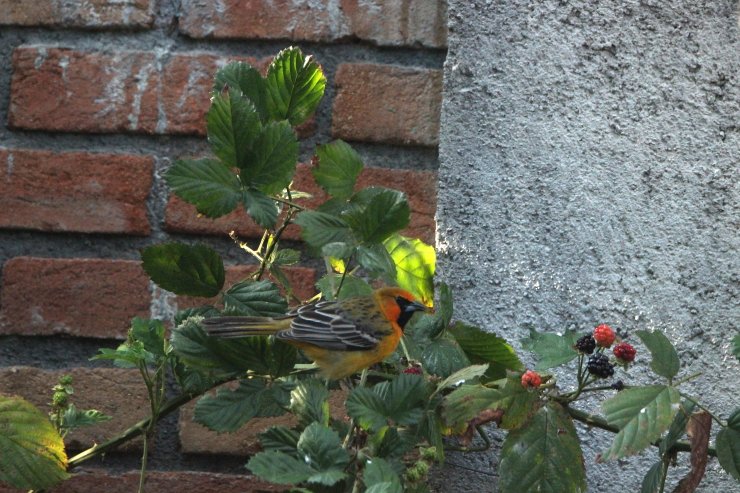
Am I itching to get back out into wilder places? You bet! And I certainly would like to be able to see more than 20 species in one morning. But in the meantime, there are some advantages to being forced to get to really know your own backyard.













Wow, Paul – Elegant Euphonia is a really cool bird! I can see about three species from my 13th-floor apartment in Shanghai, so your score is not bad at all …